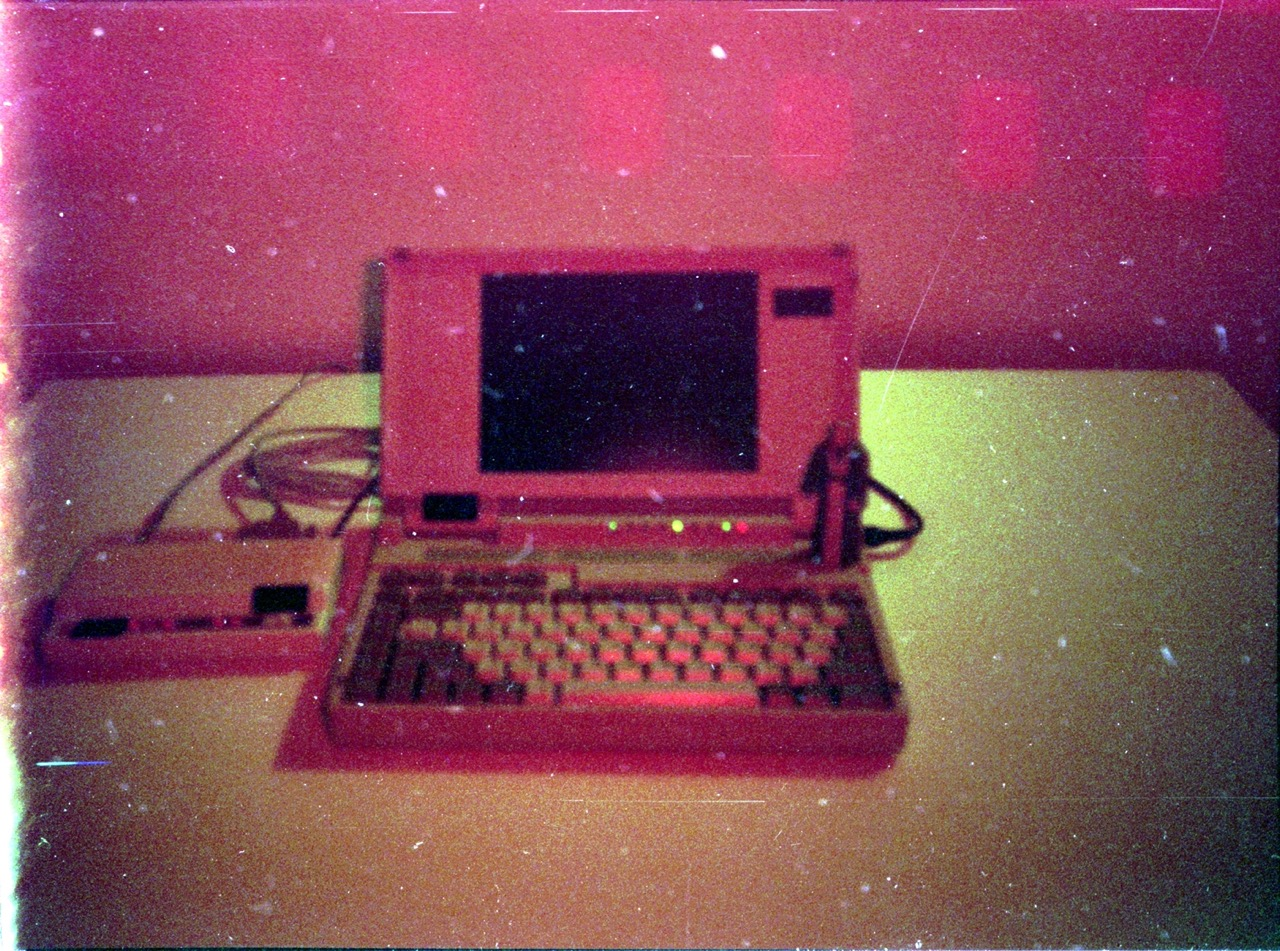

The most interesting finding from this story (the comments section, really) was discovering that the Power Mac G3 began as a skunkworks project, without the knowledge of Jobs et al.


The most interesting finding from this story (the comments section, really) was discovering that the Power Mac G3 began as a skunkworks project, without the knowledge of Jobs et al.


Least surprising news ever.
My ex once told me the story about how Leto tried to seduce her when she was 15 and he was 30. She went to see Thirty Seconds to Mars (his band) and had a backstage pass. She was just a fan. He got really weird and handsy and she got really uncomfortable and made an excuse to get out of there. Needless to say, she wasn’t a fan after that, and when she got older and processed it with an adult brain, he basically disgusted her on sight. Since then I’ve had the same reaction to him for the last 20 years.
She was very pretty (and still is), but she definitely looked underage at the time.


AI slop


Well we lost $11 billion dollars, ruined HBO as a brand, all of our terrible DC movies aren’t making money, we lost the rights to the NBA, and even considered selling off our brand mascots. So I guess Zaslav gets his full bonus for a job well done


What is the team size behind each instance? Sopuli says it’s “run by a Finn” (as in one person)


They said in the first trailer that she’s pregnant.


No, he’s really not. He’s “both sides are terrible, no one wants to work anymore, and everyone’s too sensitive” center right curmudgeon.
2016:
“There’s been just too much funny business on both sides of the aisle.”
“I think both individuals and both parties backing the individuals have a certain degree of insanity.” Eastwood said in the same interview, “I’m not on either side of the aisle. I think most Americans are going, ‘What the…? Is this all we can do?’ …When there were 17 people on the stage [in the early GOP debates], I thought, well, there are three or four people up there I could see voting for. They seem pretty good. I had a few…and then I thought, what the hell happened?”
In a red carpet interview with Extra on September 8, 2016, when asked about supposedly supporting Trump, Eastwood replied, “You know, I haven’t supported anybody, really,” and jokingly suggested that Trump and Clinton constituted a modern-day Abbott and Costello, referring to the bumbling comedians of the 1940s and early 1950s.
Then he endorsed Michael Bloomberg in 2020. That’s it.


Yeah, first, this is movies, not politics.
Second, what the fuck does this even mean? Clint Eastwood doesn’t make “MAGA movies,” whatever those might be, and although he said some things in support of Trump back in 2016, he endorsed Michael Bloomberg in 2020. Also, again, none of this has any relation to his movies.


The dude is playing Victor von Doom. The entire premise of the character is over-the-top pompous jerk. He’s playing into it.


150 minutes of parrying, dodge rolling, and running away


I decided I was done after Toy Story 3. It did a good job of wrapping up the story and I just didn’t feel the need to go beyond it. It’s like if they made a sequel to Return of the Jedi or Indiana Jones and the Last Crusade. I still haven’t seen Toy Story 4, and likely never will.


I saw it in the theater, and I’d give it a C. I didn’t love it or hate it, but I only laughed out loud a couple times. There were times when it felt more Ren & Stimpy than Looney Tunes. Maybe that’s a positive for some folks, in which case you might enjoy it more than I did.


No one likes AI in movies, period. I’m just saying this reel sucked and that would actually be impressive. Anyway, SAG negotiated rules around this that require consent from family estates and compensation, so if the estate wanted to block it, they could.


I wasn’t the one who down voted you, but I do think you’re painting an overly optimistic picture.
I was referencing 4, which was released over two years ago and was a significant improvement over 3.5. I was genuinely impressed with 4, but I haven’t been very impressed with anything since then. Probably the most substantive change was pulling chain of thought into the model itself, but everyone was already doing it anyway.
Maybe we just have different views on what counts as a game changer.
I’m not coming at this from a place of ignorance: I have AI patents to my name as both first inventor and supporting, and I’ve worked with these teams directly (although, crucially, not in video). I’m saying that the rate of improvement in critical (i.e., non-toy) areas is slowing down, and I believe it’s a significant possibility that AI will start to hit the same walls it did many times before. That was before it entered the consciousness of execs and the general public, and because they aren’t as familiar with the long stop-start history of AI, they don’t think that wall exists.
AI companies definitely know that wall exists, and in at least one case they’re getting increasingly nervous about it.


this is currently the worst it’s going to be
Yes, this is a favorite line from the industry, who assume the trend line continues uninterrupted into the future. But how about this as a counter future: what if AI plateaus?
What if it doesn’t get much better than it already is except around the edges, and the next breakthrough is two decades away? Companies have exhausted training data and exhausted data center capacity in the quest to keep the trend line at the previous vector. Yes, they’re building new capacity, but no one is making any money on this except Nvidia.
LLMs haven’t seen any significant improvement in a couple years. Image generation has improved, but at a much slower pace. Video is no longer Will Smith eating spaghetti, but there’s a long, long valley between where we are today and convincing, photorealistic, extended scenes that can be controlled at a fine level. Hence the challenge I posed.


I watched the video. It’s all 1-3 second shots of either recolored animals or two animals combined. In other words, exactly the kind of video AI can deliver at a consumer level. Not impressive. The TED audience politely clapped, but aside from one or two folks the audience didn’t seem particularly impressed either.
It’s all C-suite executives pushing this onto executives below them, who push it onto their organizations as mandates. The C-suite execs don’t care about creativity; they only care about cutting costs. At first this means shortening development times. Soon this will mean cutting staff, and not 10 years from now, but way before this technology can actually replace a human.
You know what would’ve been a good showcase? Show Rogue One but with the film shots digitally composited with an AI Tarkin or an AI Leia, and have it be better than what was originally released in 2016. And have it be lip-synced. It shouldn’t be too hard to improve upon those shots; they weren’t very good.
But AI can’t do that.


Blade Runner 2049 was another very good late sequel, except for the unfortunate fact that Jared Leto is in it.
Tron: Legacy was great except for the uncanny valley Jeff Bridges.
Top Gun: Maverick. Rocky Balboa. Creed.
It’s rare, but it can happen.


World perfected the formula that 3 established


I don’t need to see either movie, but you’re right that the similarities do sound pretty damning.
In 2014, some of us at a small company with disposable income discovered that Winamp was on the market for a relatively small amount of money (as compared to our profits). We all had fond memories of it and we had a team capable of doing something interesting with it.
The problem was we couldn’t figure out anything interesting to do with it. We could think of a ton of things we could do, but we couldn’t think of a good business model around any of them—by which I mean profitable, not just eking by.
In the end, it just wasn’t worth our time. We were better off having half the company prototype new product ideas than sink our resources into this one.
The company that did eventually buy Winamp added an NFT marketplace to it.
It seems like Frantic got stuck at the step of nostalgia plus things he could do and didn’t think too hard about business models and profitability. Leveraging his house is a bad sign, because it implies he lacks the financial resources to do much with Commodore beyond buying the brand.
My guess? He’ll try to put together a new computer aimed at nostalgia seekers, it will underperform, and he’ll pivot to selling branded merchandise for a while until he eventually sells the brand at a loss.